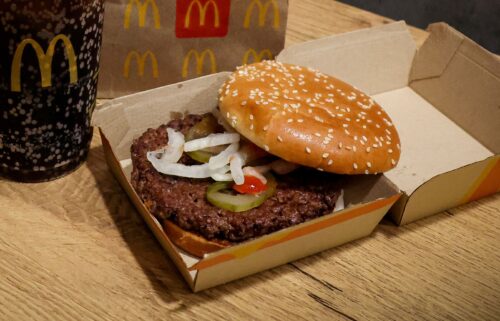Stanley cup maker has a plan to make its product launches less chaotic
By Parija Kavilanz, CNN
New York (CNN) — Stanley has a problem. Whenever one of its new tumblers hits the the market, online and in store, mayhem tends to ensue.
It’s because the Stanley tumbler is arguably one of the most viral products of the moment. While the brand is enjoying unprecedented popularity of its tumblers and cups, it’s also facing some downsides to TikTok-driven fame.
Recent new Stanley launches have triggered stampedes in stores, website crashes, bots and bad actors scooping up products just to resell them for a hefty profit at the expense of true fans who then can’t get their hands on one.
So Stanley maker PMI has taken a different approach with its newest limited edition tumbler launch of the much-hyped chocolate and gold Quencher. The aim, according to the company, is to limit the chaos and to ensure that people who actually want the tumbler and are genuine fans of it have a fairer shot of getting one.
To make it happen, PMI partnered with Australia-based EQL, a company that has plenty of experience helping large brands — such as Crocs and Nike — better manage new product launches — both online and in stores — and prevent scalpers from scoring the items.
On Tuesday, Stanley unveiled the limited-edition chocolate gold Quencher tumbler on its website.
Previously, fans would spot the launch news and rush to the website in hopes of scoring a cup. For the first time, Stanley switched up this process.
The company created a launch page managed by EQL’s platform for the chocolate gold tumbler. From 9 a.m. to 3 p.m. on Feb. 27, Stanley opened the window for people to sign up for a chance — one per person — to buy it. Within 24 hours, people who signed up would be notified if they scored a winning entry.
The method sounds much like one used typically for other high-demand events, such as concert tickets.
“On the backend, we’re evaluating the quality of each entry,” Andrew Lipp, CEO and cofounder of EQL, said in an interview with CNN.
That includes browser signals, location signals, fraud analysis, cohort signals and “assessing basically who looks like a real fan and who is using automation or otherwise to game the system,” he said.
A red flag, for example, would be when the system detects that far too many people are entering from one IP address. “Then we start to analyze a risk profile against the user,” Lipp said, adding that suspicious entries are weeded out of the the general pool of signups.
“Online, when you are trying to compete with this kind of fever pitch over a product, you do get resellers, scammers and bots doing a whole bunch of nefarious things to clear out stock and it’s not fair for the fan,” Lipp said. “This results in customer blowback, brand blowback and you’re not delivering a great brand experience to the customer.”
Rediscovered on social media
Invented by William Stanley, Jr. in 1913, the all-steel vacuum-insulated Stanley bottle was originally invented for keeping food and beverages hot or cold, and has since become a popular go-to camping and hiking accessory.
The 111-year-old brand has recently enjoyed a massive resurgence with a much younger clientele of tweens, teens and young adults, especially after its Quencher 40-ounce tumbler exploded on social media because of its ability to keep beverages hot or cold for extended periods of time. Plus, plenty of moms applauded and marveled at the fact that despite its size, the tapered bottom still fit perfectly in a vehicle’s cup holders, making it an indispensable accessory for morning school drop-offs.
The frenzy showed no limits. It’s Starbucks’ exclusive shiny red holiday tumbler flew out of Starbucks’ locations in November almost immediately after they rolled out.
When Target dropped a limited-edition Valentine’s collection of Stanley tumblers in bright pink and cherry red tones in December, the situation wasn’t pretty. Tiktok videos showed customers racing, slipping, sliding, and pushing past each other to be first to reach the shiny new tumblers sitting at the end of aisles.
Within hours of their launch, the $50 tumblers were selling for $100 or more on resale sites.
Now, the company said it hopes that the steps it’s taking will “provide all consumers with a wider aperture and more user-friendly [online] experience to get the Stanley products they love,” Matt Navarro, senior vice president, global commerce with Stanley, said in a statement to CNN.
Lipp said Stanley is evaluating how the new process fared and will decide if the company will implement it for other upcoming products.
The-CNN-Wire
™ & © 2024 Cable News Network, Inc., a Warner Bros. Discovery Company. All rights reserved.

